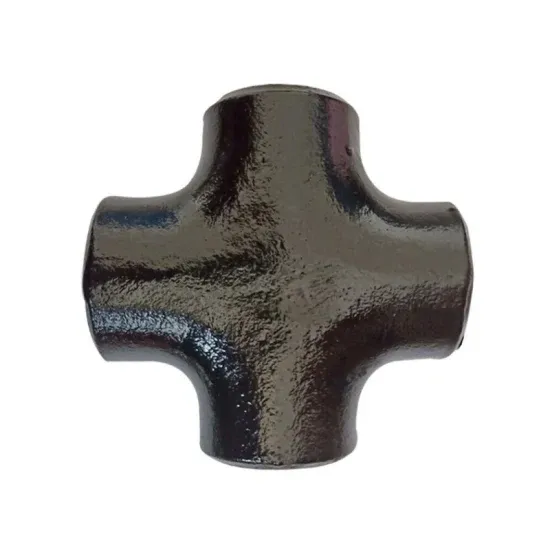-
Cangzhou Yulong Steel Co., Ltd.
-
Phone:
+86 13303177267 -
Email:
admin@ylsteelfittings.com
- English
- Arabic
- Italian
- Spanish
- Portuguese
- German
- kazakh
- Persian
- Greek
- French
- Russian
- Polish
- Thai
- Indonesian
- Vietnamese
- Zulu
- Korean
- Uzbek
- Hindi
- Serbian
- Malay
- Ukrainian
- Gujarati
- Haitian Creole
- hausa
- hawaiian
- Hebrew
- Miao
- Hungarian
- Icelandic
- igbo
- irish
- Japanese
- Javanese
- Kannada
- Khmer
- Rwandese
- Afrikaans
- Albanian
- Amharic
- Armenian
- Azerbaijani
- Basque
- Belarusian
- Bengali
- Bosnian
- Bulgarian
- Catalan
- Cebuano
- China
- China (Taiwan)
- Corsican
- Croatian
- Czech
- Danish
- Esperanto
- Estonian
- Finnish
- Frisian
- Galician
- Georgian
- Kurdish
- Kyrgyz
- Lao
- Latin
- Latvian
- Lithuanian
- Luxembourgish
- Macedonian
- Malgashi
- Malayalam
- Maltese
- Maori
- Marathi
- Mongolian
- Myanmar
- Nepali
- Norwegian
- Norwegian
- Occitan
- Pashto
- Dutch
- Punjabi
- Romanian
- Samoan
- Scottish Gaelic
- Sesotho
- Shona
- Sindhi
- Sinhala
- Slovak
- Slovenian
- Somali
- Sundanese
- Swahili
- Swedish
- Tagalog
- Tajik
- Tamil
- Tatar
- Telugu
- Turkish
- Turkmen
- Urdu
- Uighur
- Welsh
- Bantu
- Yiddish
- Yoruba

Dec . 15, 2024 06:01 Back to list
Guide to Installing Galvanized Pipes for Plumbing Projects at Home
Installing Galvanized Pipe A Comprehensive Guide
Galvanized pipe has been a popular choice for plumbing and other applications for over a century. Coated with a layer of zinc to prevent rust and corrosion, these pipes are durable and long-lasting, making them ideal for a variety of uses, including water supply lines, steam heating systems, and fence posts. This article provides a step-by-step guide on how to install galvanized pipe effectively.
Materials Needed
Before starting the installation, gather the necessary materials and tools - Galvanized pipes of the required lengths - Couplings and fittings - Teflon tape - Pipe wrench - Pipe cutter or hacksaw - Measuring tape - Pipe thread sealant (optional) - Safety goggles and gloves
Step 1 Measure and Plan
Begin by measuring the area where the pipe will be installed. Take note of all distances, bends, and angles. Proper planning helps in minimizing the number of fittings needed, which can lead to a more robust and leak-free installation. Ensure that you know the local building codes related to plumbing, as these can affect the installation process.
Step 2 Cut the Pipes
Once you have your measurements, the next step is to cut the galvanized pipes to the specified lengths. A pipe cutter will provide a cleaner cut, but a hacksaw can also be used if necessary. Ensure that the ends of the pipes are smooth and free of burrs to facilitate a tight connection with fittings.
Step 3 Thread the Pipes
If your galvanized pipes are not pre-threaded, you will need to create threads on the ends. Use a pipe threading tool for this. Ensure that you follow the appropriate size and thread type for your fittings. After threading, clean the threads to remove any debris.
installing galvanized pipe

Step 4 Apply Teflon Tape
Before connecting the pipes, wrap Teflon tape around the threads of each pipe. This tape helps to create a watertight seal and prevents leaks. Apply two to three wraps of tape in the clockwise direction, ensuring that you don’t cover the first few threads.
Step 5 Connect the Pipes
Begin connecting the pipes by screwing them into the fittings. Use a pipe wrench to tighten the connections but be cautious not to over-tighten, as this can cause damage to the fittings and the pipe itself. Ensure that each connection is secure and aligned properly to avoid any strain on the pipes.
Step 6 Test the System
Once all pipes and fittings are connected, it’s essential to check for leaks. Turn on the water supply slowly and inspect each joint for any signs of dripping. If leaks are found, tighten the fittings as necessary. For stubborn leaks, you may want to remove the fitting, apply more Teflon tape, and reconnect.
Step 7 Insulate and Protect
If the pipes will be exposed to extreme temperatures or outdoor conditions, consider insulating them to prevent damage from freezing or excessive heat. Use foam insulation or pipe sleeves as appropriate.
Conclusion
Installing galvanized pipe can be a straightforward DIY project for those with basic plumbing skills. By following the steps outlined above and taking the necessary precautions, you can ensure a successful and long-lasting installation. Always remember to wear safety gear and adhere to local plumbing codes. Whether you’re replacing old pipes or installing new ones, galvanized pipes can provide reliable service for years to come.
Latest news
-
ANSI 150P SS304 SO FLANGE
NewsFeb.14,2025
-
ASTM A333GR6 STEEL PIPE
NewsJan.20,2025
-
ANSI B16.5 WELDING NECK FLANGE
NewsJan.15,2026
-
ANSI B16.5 SLIP-ON FLANGE
NewsApr.19,2024
-
SABS 1123 FLANGE
NewsJan.15,2025
-
DIN86044 PLATE FLANGE
NewsApr.19,2024
-
DIN2527 BLIND FLANGE
NewsApr.12,2024
-
JIS B2311 Butt-Welding Fittings LR/SR 45°/90° /180°Seamless/Weld
NewsApr.23,2024











